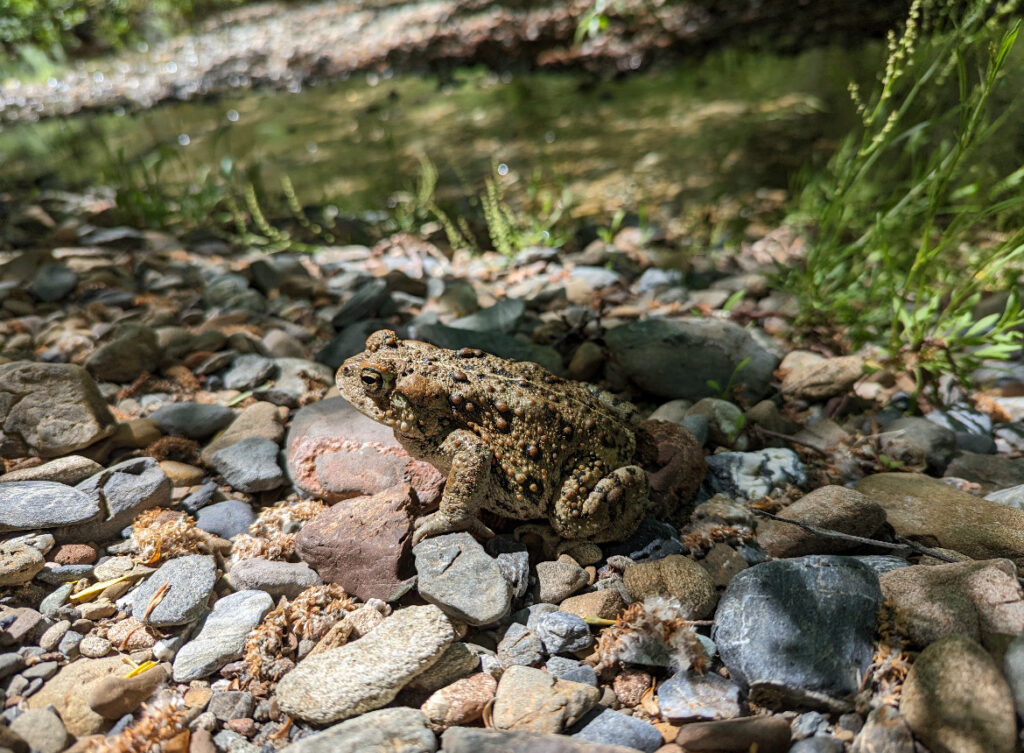News
Western Toads – Don’t Let Them Croak
April 16, 2024

The western toad (Anaxyrus boreas) is one of California’s most common toads. They may look mean with their warty appearance, but, please, don’t give them the boot!
These docile forest creatures are perfectly content with a life of hibernation and snacking. And the other critters in their habitat know to leave them alone. Western toads contain a mild toxin called bufotoxin that is produced in their skin. This isn’t especially dangerous to humans, but it can prove deadly to the suite of predators in the forest looking for a quick meal. This toxin is also present in their eggs for the same reason, assuring the masses of tadpoles you can see in ponds each spring.
Breeding is triggered by winter rains. These rains initiate a mini-migration of sorts, when the toads venture from their moist forest homes and congregate in wetlands to find mates. This process begins in lower elevations as early as January, but in the mountains and in areas with cooler temperatures, breeding may not occur until March. Males make a high-pitched chirrup or chattering to attract females. You can hear a sample by clicking here.
Once they have mated, females will lay thousands of eggs in standing water. Peak egg laying usually happens in April. The eggs develop and hatch in about a week. From there, the inch-long tadpoles live an aquatic life feeding in the natal pools until late summer when they metamorphose into adults. This process has them grow legs, reabsorb their tails, and develop lungs to replace their gills. This allows them to adapt to a terrestrial lifestyle. Once metamorphosis is completed, western toads will hop along to find a moist burrow to wait for the winter rains again.
In recent decades, western toad populations have been hit hard by a disease called chytridiomycosis. This disease is caused by several chytrid fungi species that began spreading around the globe in the 1970s and 1980s and has caused extinctions in some amphibian species. The fungus enters the skin of the toads and can lead to a range of effects from sloughing of skin to bizarre behavioral issues, eventually resulting in death. While the western toad hasn’t been hit as hard as other amphibian species, climate change creates more suitable areas for the fungi to colonize and potentially wreak havoc on populations.
What can you do to help?
You can avoid contaminating their habitat with soil from elsewhere. Cleaning your footwear between hikes, especially in wet areas, can help limit exposure and may promote many more mini-migrations in the future!
So, be boot aware! The toads will thank you… by not croaking.